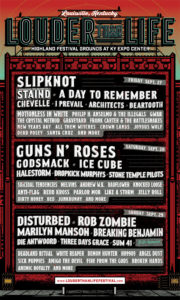Best music to play in the workplace
Companies that recognize the benefits of fostering a great employee atmosphere love workplace innovations. This means being competitive in a business sense, but it also means allowing a little freedom for employees to feel comfortable.
If you are employed by a company that allows music to be played in the workspace, you are lucky indeed. If you are the person responsible for creating a great workspace, consider adding music to the workplace. When you do, give your choices of genres and styles some thought.
Work environments are diverse, and so are employees. It is rare to find a group of people with completely similar tastes in music. Along with this, not every style of music is conducive to productivity. When you choose music for the workplace, it is good to have a sense of how various music styles affect people.
Rock and Metal
Rock music is typically loud, and it has a signature sound that includes aggressive lyrics and amplified instruments. This type of music encompasses a wide range of styles. At least a few people on your staff will love the prospect of having driving metal sounds at work, but the vast majority of people will be distracted. Rock is very diverse. Classic rock combines many styles however, and it could be a welcomed addition to a work environment.
Classical Music
There is many clinical studies that show how listening to classical music increases brain activity. Though this is true in controlled studies, classical music often creates a feeling of tension for people who are not used to listening to it. Plus, classical music has volume and expression extremes that can be unexpected. If you like the sound of classical music, use it to create a sophisticated ambiance in lobby areas.
Folk and Country Music
This type of music centers on the telling of stories. Modern country and folk music sometimes gets confused with rock because it tends to have a great deal of energy. Sometimes, the poetry in folk music can be distracting for people listening. This includes people who are trying hard to get work done. The twangs and drawls of country and folk music can also be irritating to people on your staff that do not identify with the style.
Meditation and New Age Music
This type of music features slow and easy speeds, harmonies, and volume levels. While this music is wonderful for relieving stress and anxiety, it has a tendency to lull listeners into a mental state where they become non-productive. The goal of this music is calmness. This is great for relaxing with a glass of wine at home after work, but it can be counterproductive when people are on the clock.
Pop, Dance, and Electronica
This genre generally features fast beats, weird club sounds, and lyrics that are not always appropriate for public spaces. Much of this music is produced using digital technology, and it is best enjoyed at very high volumes. Its sound is also paired mostly with youth culture. Though many dance and pop tunes are loved across many demographics, playing them in a workplace could be very distracting to workers and customers.
Easy Instrumental Music
This music is designed to have neutral soothing affects and universal appeal. It usually features a combination of real instrument playing and digital sound production. Music tracks in this genre are longer than their pop music counterparts, and they rarely feature singing. Most professional places that have background music choose to play light instrumental sounds that are vibrant, but they never command attention.
All music styles have their positives and negatives in a work environment. The idea is to find music that pinpoints a “happy medium” between what employees love, and what people visiting the workplace will not consider too harsh.
The secret to finding the perfect music to play in the workplace is mixing. The purpose of playing music in a work environment is breaking any sort of monotony. Ambient music also makes a workplace seem more warm and inviting. Mixing music styles and genres tends to keep people interested in their tasks. It also promotes vibrant activity that is fun, attractive, and engaging.
Any mixed music source that you choose to play in the workplace should be designed for that purpose. Some music has copyright restrictions that control how it can be used and played in commercial environments. The best way to avoid legal complications regarding music in the workplace is utilizing royalty free music streaming services. These services provide vast data banks of music that can be used in any environment without the risk of copyright infringement. They also provide an incredibly diverse range of music styles from which to choose.
Your workplace could be a mechanic shop where most employees work best with hard rock sounds. On the other hand, it could be a busy office where light jazz is preferred. The environment could also be an airport terminal where neutral New Age music soothes workers and guests. The idea is to match musical sounds with the people who listen to it the most, and to promote the goals set forth in the particular workplace.
Employees and patrons of most businesses appreciate hearing music. Know that the music that you play in the workplace reflects powerfully on the image you want to create. Keep the tunes fresh, and always make sure your music source is free of royalties and exorbitant fees. Background music should be a tool for increasing productivity. It should never be a financial burden.








